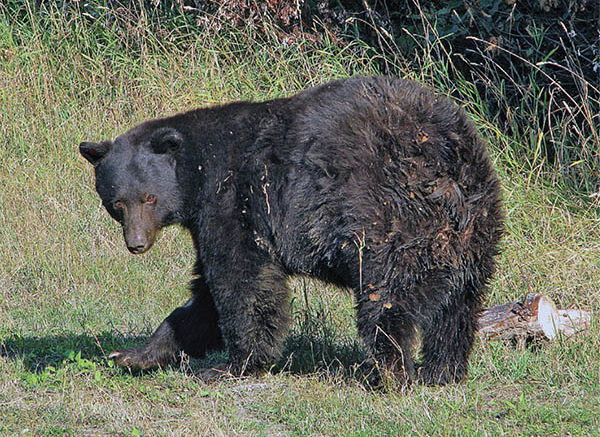By Moira Blazi
State Grizzly Bear Management Specialist, Kim Annis spends very little of her time with bears. What she mostly does is teach and assist people about how to live harmoniously side by side with our bruin neighbors.
Annis specializes in both grizzly and black bears, managing their conflicts with human beings, but, although her job title is Grizzly Bear Management Specialist, a position that was just created in 2007 by Montana Fish, Wildlife and Parks (FWP), she spends most of her time dealing with the much more frequent conflicts arising between humans and black bears.
“Every time we eliminate a conflict with a black bear we are preventing a potential future conflict with a Grizzly,” she told the Montanian.
“Bears are very smart, they learn progressively,” said Annis about human habits and behavior, and they are all about finding food. Annis recommends putting food sources like garbage “behind four walls and a closed door.” But, when it comes to livestock, “electric fencing is our best resource for bears, it is my go to tool,” she said. “I have a whole shed of electric fencing…, I got my master’s degree in wildlife biology, only to become a master electrician,” she added with a smile. Electrifying your chicken coop can be very expensive however, but there are cost-sharing programs available to help defray the expense both from state agencies like the Montana Livestock Association and from private groups like Defenders of Wildlife. There are also free tools and materials available.
Most of the grizzly bears in our area have been tagged with GPS tracking devices, and FWP officers like Annis, as well as Forest Service rangers like Wayne Kasworm can now track the activities of specific bears over a period of years, and over hundreds of square miles. Now, as bears are emerging from winter hibernation, Annis and her colleagues know just how close to urban areas they are wandering. The first grizzly out and in trouble this year was a young male east of Troy on March 19.
Going after some garbage cans, he climbed over a trailer and a truck, smashed some rabbit cages and ate three rabbits. It was the first bear incident of the season and FWP officers did not catch him. A few weeks later, a female bear killed three goats who had jumped out of their pen, and Annis said the bear had absolutely no interest in the trap they set for her.
Both encounters could have gone very differently if the livestock had been behind electrified fencing. It isn’t just livestock, “bears are a generalist species,” Annis said. This means they eat practically anything.
“If we allow them to become comfortable around people, they will continue getting bolder. Just recently, we heard from a guy who had a bear swipe a garbage bag right out of his hands.”
Bears also like bird seed, cat food, compost piles, young vegetables from our gardens, and of course ripe fruit from neighborhood trees. When there is a low elevation food failure in the forest, black bears will come into urban areas to find food. Residents may remember, back in the late summer of 2015 when five individual black bears, two of which were over 20 years old, were taken out of downtown Libby near the Christian school, at Larch and Balsam streets.
“If you don’t use the fruit, we recommend you blow off the blossoms or pick the green fruit,” said Annis.
Bears travel the creek corridors and will begin their food search in the outlying areas. If the bears don’t find food sources there, Annis said, they will most likely go back into the forest. But if they do find food, being the progressive learners that they are, they will press farther in so it is doubly important for residents whose property adjoins the forest interface to prevent bears access to food sources.
People are not going to stop making their homes in beautiful natural areas so wild animals are going to be our neighbors, and folks like Kim Annis are there to help us all get along.
“My job is to help residents to live wherever and however they want to live but protect the bears at the same time,” she told The Montanian during our interview.
For more information about bears, other wildlife, or electric fencing options contact Kim Annis, Bear Management Specialist, at 293-4161.

